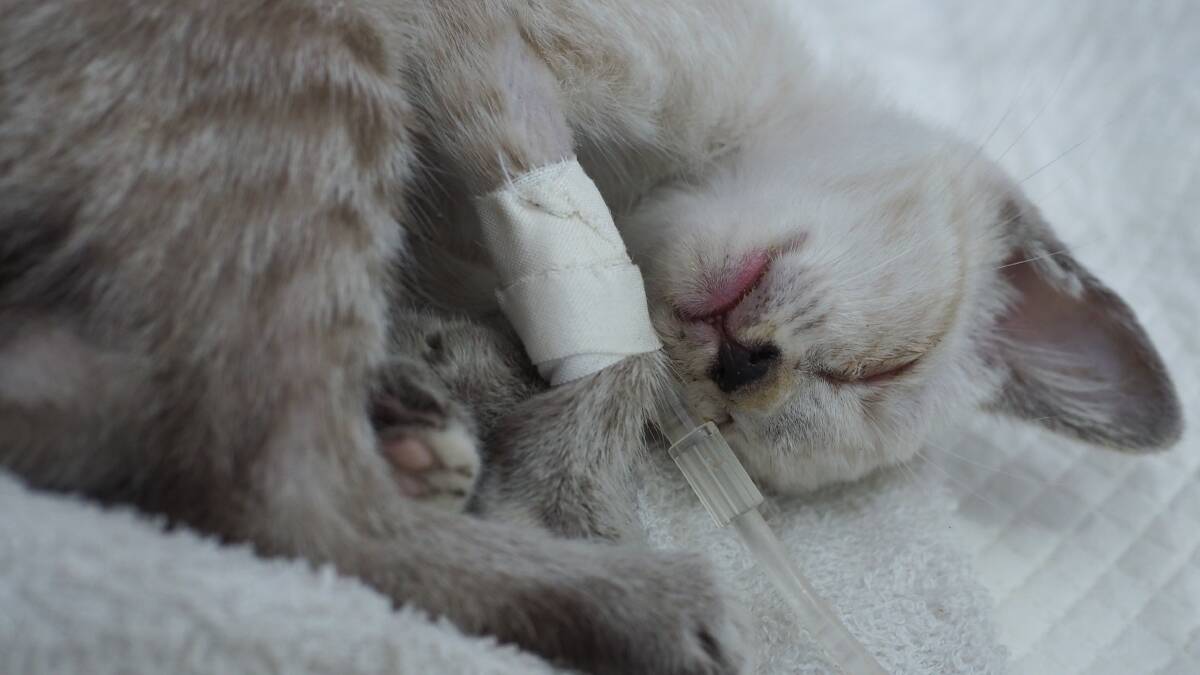
Feline infectious peritonitis (FIP for short), is a rare but fatal disease of cats, especially kittens.
Subscribe now for unlimited access.
or signup to continue reading
FIP is caused by a cat-specific strain of coronavirus, one that was around long before COVID-19 emerged.
In the majority of cats, feline coronavirus causes mild, self-limiting diarrhoea. But some cats go on to develop FIP.
Feline infectious peritonitis
The disease presents in two main forms: "dry" FIP, where solid lesions form within organs including the lungs, intestines, kidneys, and the central nervous system, and "wet" FIP, which leads to accumulation of large amounts of fluid within the abdomen and/or chest.
Affected cats develop a fever, become lethargic and lose interest in food. Those with wet FIP can develop a bulging abdomen.
You might also like:
When I was a veterinary student, I spent a year researching FIP. A definitive diagnosis was difficult to achieve, often requiring biopsies.
Despite attempts to provide treatment and supportive care, affected kittens didn't make it. I spent most of that year performing post-mortem examinations on kittens whose bodies had been donated to science by owners in the hope that we might one day find a cure.
Diagnostic tests have improved and access to new antiviral drugs is providing hope.
University of Sydney researchers, including Dr Sally Coggins, have been conducting a clinical trial to capture the effects of these drugs, "nucleoside analogues", in cats around Australia with confirmed FIP.
Currently, cats enrolled in the trial require a minimum of 84 days of treatment.
"Initially, we only had access to an injectable formulation, so owners needed to learn how to administer injections daily to their cats at home," Dr Coggins said.
"In some cats, owners reported the injections became painful."
Results are promising
"Since the release of a second tablet form of the drug, the most common protocol involves beginning cats off with daily injections, usually in a veterinary hospital, until they start to turn a corner," Dr Coggins said.
Cats can then be discharged home on tablets to complete the 84 days of treatment.
According to Dr Coggins, most cats respond remarkably well.
"Their temperatures go back to normal and they start eating and feeling well within the first week of treatment," she said.
"Owners typically report a return to completely normal behaviour by two to four weeks of treatment."
As cats regain weight and feel better, medication doses need to be adjusted.
"The biggest cause of treatment regressions are inadvertent dose reductions due to weight gain of cats," Dr Coggins said.
In addition to having their weight carefully monitored, cats being treated require blood tests every two to four weeks to ensure they are on track and don't need dose increases or longer treatment.
"Approximately 85 per cent of cats go into remission with treatment. And so far, most appear to stay there."
According to Dr Coggins, data on long-term outcomes is developing, as the treatments have only been available within the last two years.
"Several cats in our study have already survived beyond 12 months and we know of many more who have survived even longer."
The drugs are still expensive. Costs depend on the form of disease and the weight of the cat.
Currently, the drugs alone cost between $3000 and $12,000 for the 84-day period.
These costs will likely decrease as newer versions of these drugs become available.
"After decades of heartbreak, I still pinch myself that we are finally in an era where we can cure this disease," Dr Coggins said.
There is still a way to go, but we've come so far.
- Dr Anne Quain BVSc (Hons), MANZCVS (Animal Welfare), Dip ECAWBM (AWSEL) is a lecturer at the Sydney School of Veterinary Science and a practising veterinarian.

